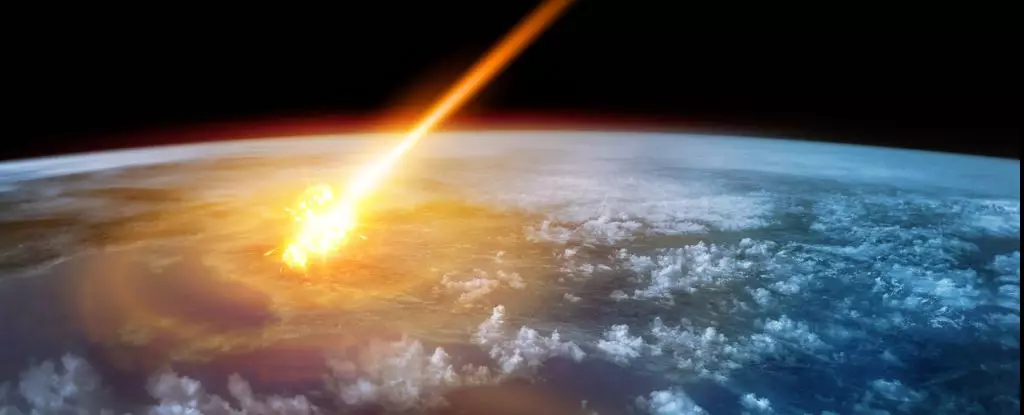In an astonishing revelation that will undoubtedly reshape our understanding of Earth’s geological history, researchers have confirmed the existence of the oldest meteorite impact crater on our planet, nestled in the arid heart of the Pilbara region in Western Australia. This crater, forming over 3.5 billion years ago, exceeds the previous age record by an astounding billion years, illustrating how dynamically intricate our planet’s early history truly is. Published in the high-profile journal *Nature Communications*, this discovery not only cements the crater’s age but also supports a speculative yet profound theory regarding the formation of Earth’s very first continents.
Unraveling Earth’s Ancient Mysteries
Geologists have long debated the origins of Earth’s earliest continental crust, which is primarily observed in the cores of today’s continental masses. Although the question of how these primordial landforms emerged remains contentious, there is widespread consensus on their significant influence in facilitating essential chemical and biological processes crucial for life as we understand it. Various competing theories have emerged from the geological community—some point towards rising thermal plumes from the deep mantle, akin to wax in a lava lamp, while others advocate for plate tectonic movements reminiscent of current geological dynamics.
Interestingly, the researchers behind this new study propose a compelling alternative theory: the impact of extraterrestrial bodies may have played an instrumental role in generating continental crust. According to this view, the energy released during massive meteorite impacts could have melted surrounding rocks and ejected vast quantities of material from the mantle, which subsequently crystallized into continental landforms. This novel interpretation invites a reevaluation of our planet’s formative processes and highlights the inadequacies of existing models.
Fieldwork: A Journey of Discovery
The path to confirming this remarkable crater was paved with meticulous planning and collaboration. In May 2021, the research team set off from Perth, ready to embark on an extensive field expedition alongside partners from the Geological Survey of Western Australia (GSWA). Armed with aerial photographs and geological maps, they keenly searched for telltale signs of an impact site. Their focus was on a distinct layer of rocks dubbed the Antarctic Creek Member, situated on a dome that spans approximately 20 kilometers in diameter.
This layer, primarily formed of sedimentary rock accompanied by dark basaltic lava, contains unique spherules—tiny droplets generated by previous impacts. However, the geological team faced considerable challenges, as these features could potentially originate from impacts many kilometers away, underscoring the complexity of tracing back to the original event.
Their persistence paid off when they unexpectedly discovered shatter cones, spectacular branching structures signaling a meteorite’s violent aftermath. These formations are the only visible evidence of shock waves from impacts and can only arise under specific circumstances. The finding was serendipitous; the research team had unwittingly placed their foot onto what they believe to be the ancient floor of a gigantic impact crater.
Validation and Confirmation: Inside the Lab
With initial observations and samples collected, the team was electrified by the prospect of having found Earth’s oldest known crater. However, rigorous scientific validation was essential. A subsequent field expedition in May 2024 provided the researchers with the opportunity to examine the evidence in unprecedented detail, revealing shatter cones distributed abundantly throughout the Antarctic Creek Member. The layered geological formations surrounding these cones played a critical role in confirming the crater’s age, correlating with the 3.5 billion years attributed to the surrounding rocks.
Through painstaking analysis, researchers concluded that the age of the impact event aligned perfectly with the age of the Antarctic Creek Member, solidifying their assertion that they had uncovered the record-holding impact crater. This discovery adds a critical puzzle piece to the evolving narrative of our planet’s history, reaffirming the importance of extraterrestrial impacts in shaping early geological landscapes.
A Legacy of Geological Significance
As future studies unfold, the implications of this discovery will reverberate throughout the scientific community. The findings pave the way for a more nuanced understanding of the forces that sculpted our planetary surface. Beyond its scientific merit, the crater holds cultural significance as well; the Nyamal people, the Traditional Owners of the land, have witnessed these remarkable geological formations long before modern science laid eyes on them.
By joining ancient narratives with modern geological knowledge, researchers have illuminated a captivating chapter of Earth’s history. It dispels a one-dimensional view of geological evolution, crystallizing a vision of our planet as a vibrant tapestry woven from myriad cosmic events. The presentation of hard evidence supporting the role of meteorite impacts invites not only further discussion within the scientific realm but also a profound appreciation for the dynamic forces that continue to shape our world.

